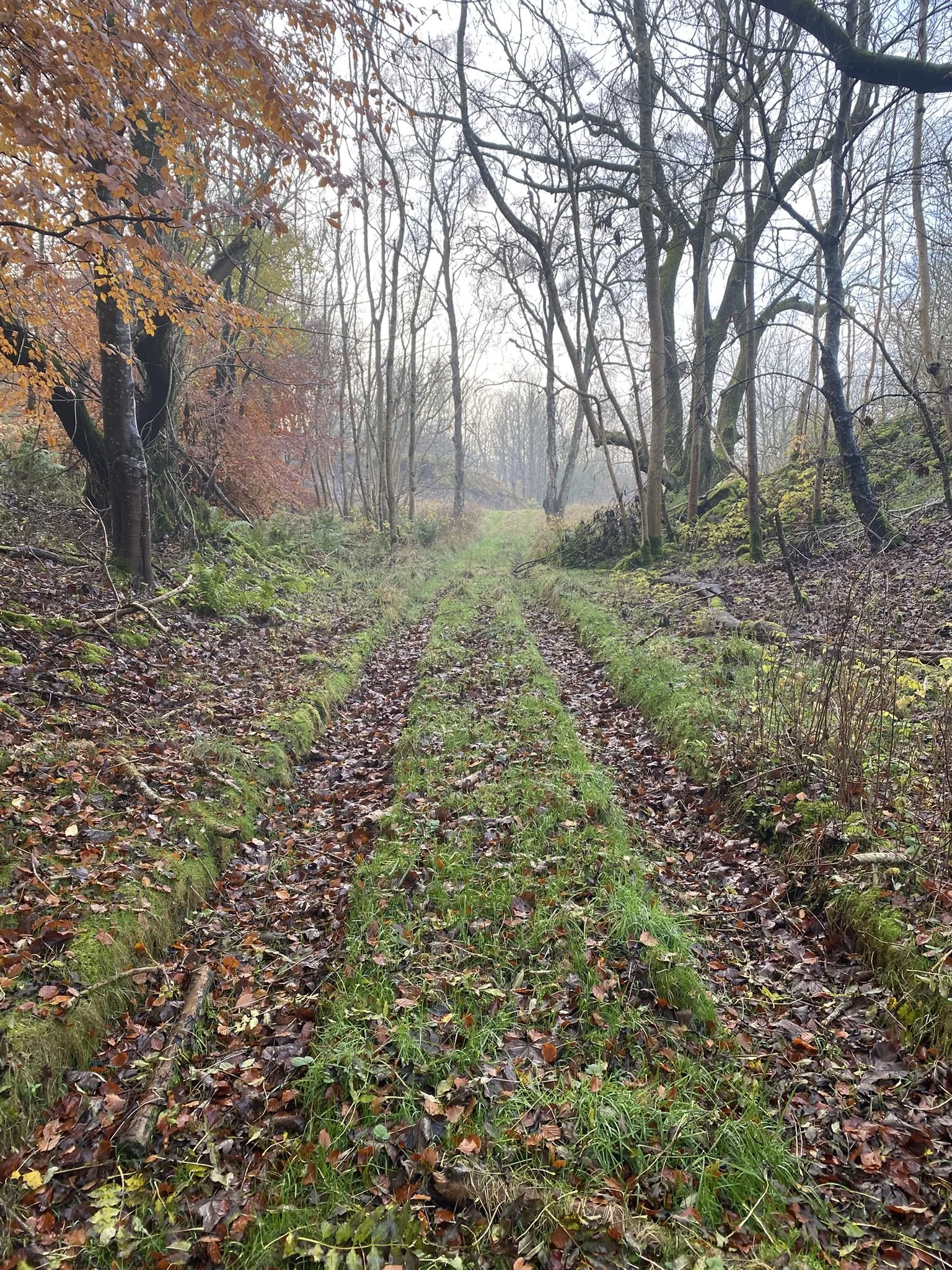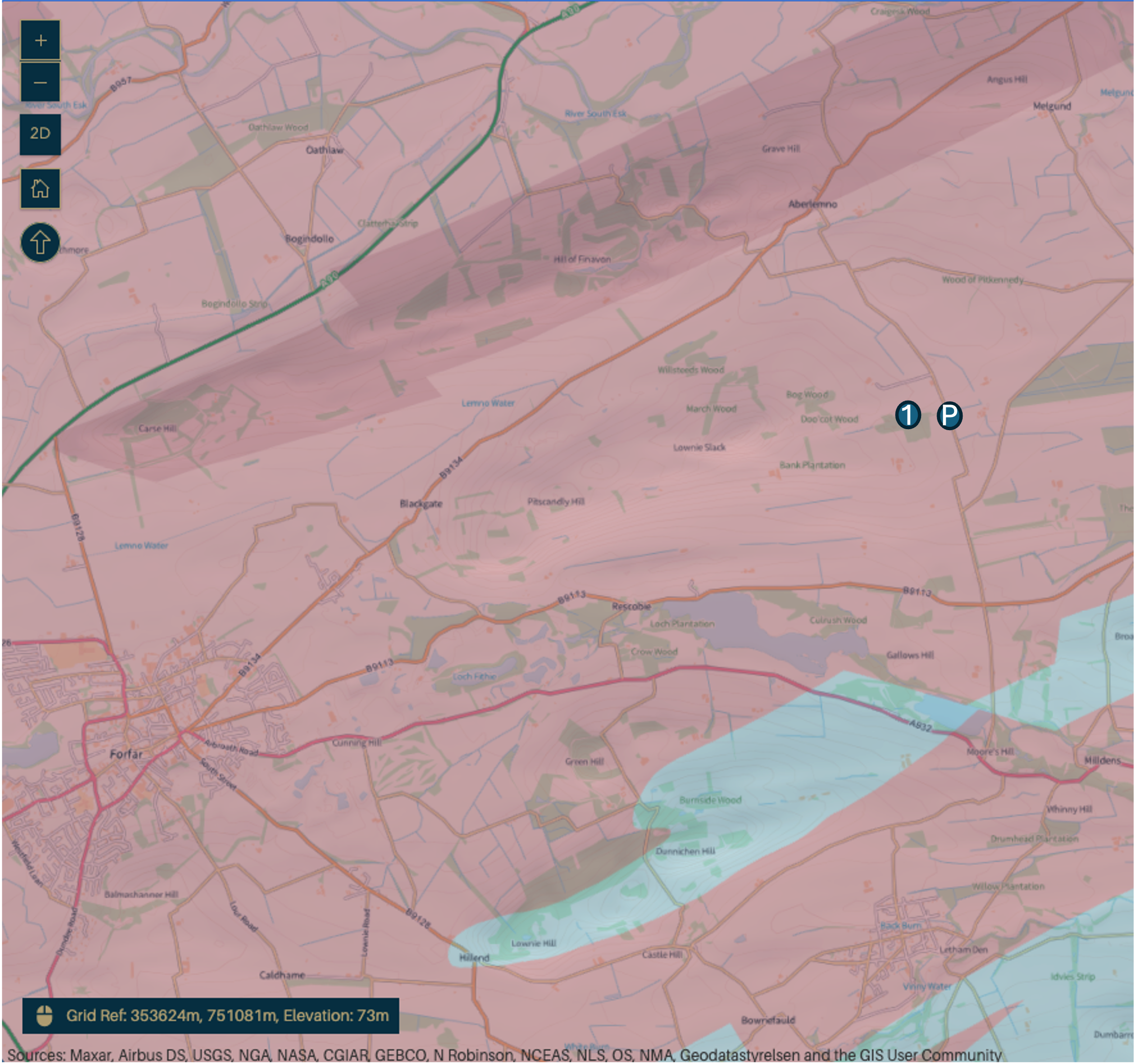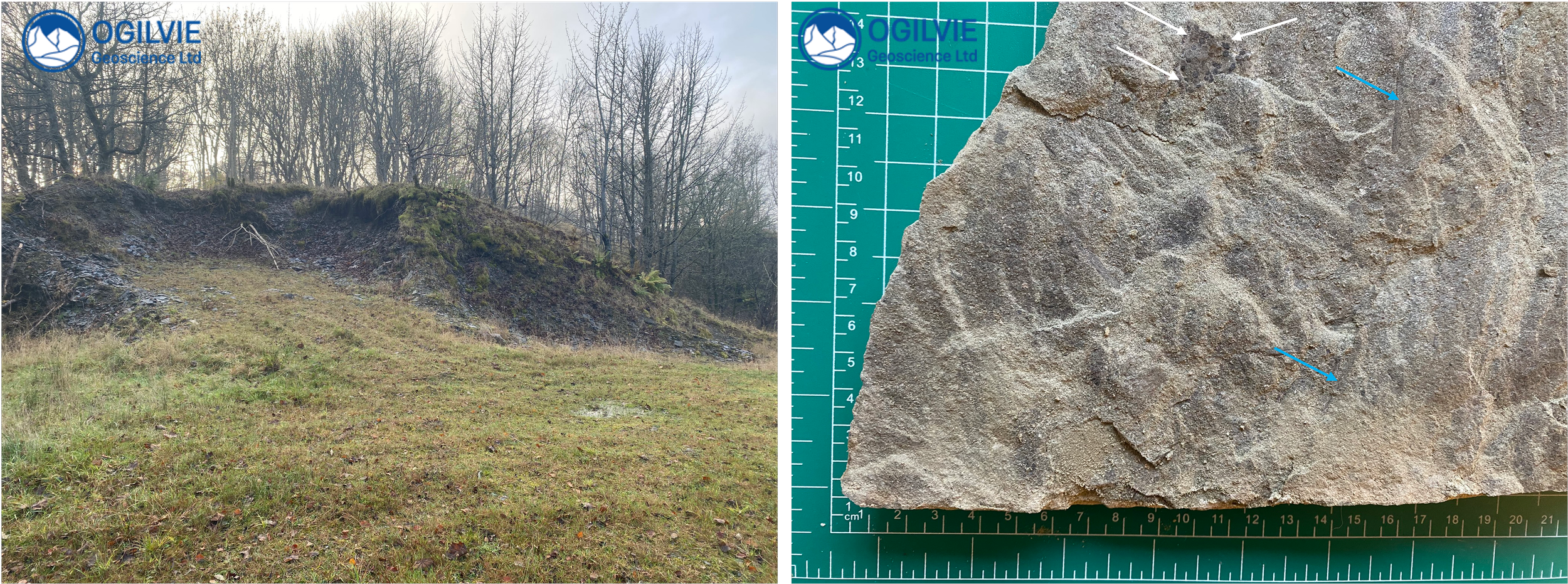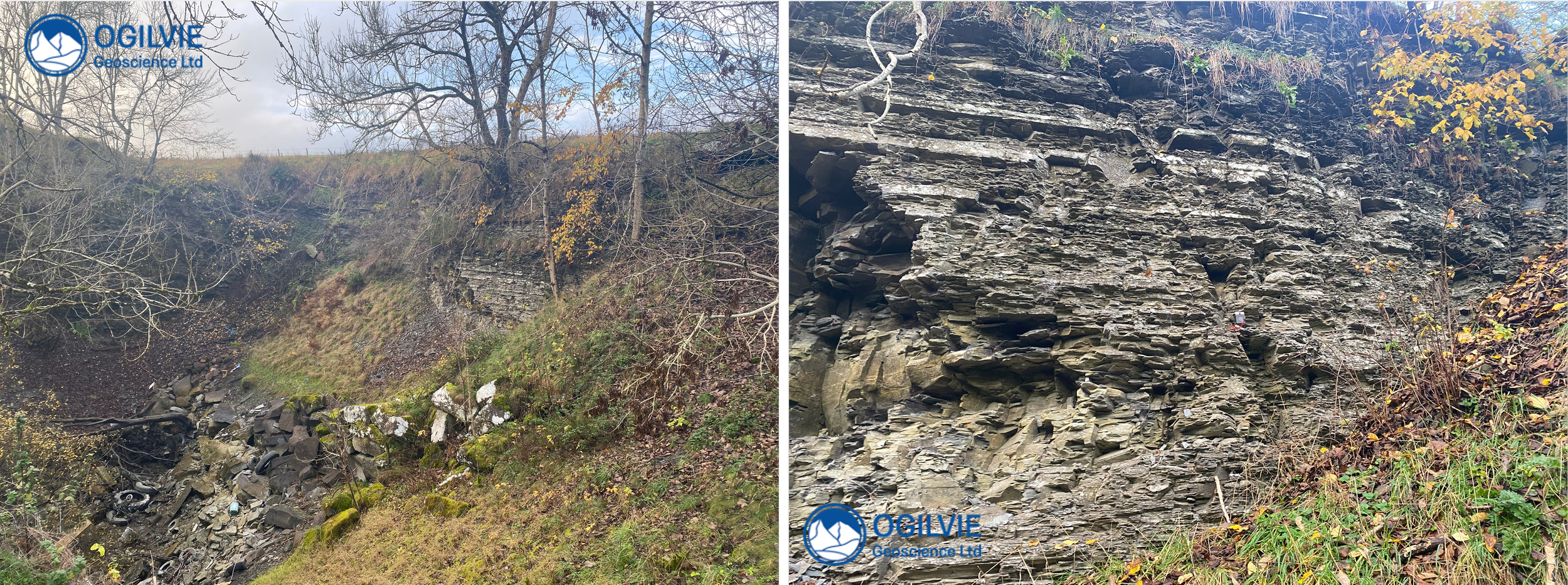Tillywhandland Quarry, fossil fish locality, nr Forfar, Scotland
What’s special about this quarry ?
Trackway (not for cars though) into the quarry. Photo taken early Nov 2025.
Type locality for various specimens of fossil fish in the laminates and flagstones that have been quarried here for roofing and paving uses. Its possible that the roofing material for the building photographed in an older blog came from here. https://www.ogilviegeoscience.com/blog/limestones-at-boddin-point
I first heard of the quarry and it’s geology by looking at the geosites map from the Scottish Geology Trust.
https://geosites.scottishgeologytrust.org/geosite/3550
Location and Access
I followed the direction given by the above website - take the B9113 east from Forfar and after about a mile take (a left turn and) the minor road towards Aberlemno. Tillywhandland farm is about half way along this road to Aberlemno. You can park on the verge next to the woodland track before the farm. I turned up at the farm and the farmer told me it was best to park as above. Don’t try to take your car along this trackway; instead it’s a short (5 min) walk to the quarry.
Spoil Heaps
As you enter the quarry area there’s a couple of spoil (waste flagstone) heaps on your left hand side. These are good fossil fish hunting localities. I found some fish scales and a few parts (i’m not an expert !) after opening up a few of the more sandy, chunky boulders. This requires a gentle tap of the hammer along a bedding plane. The flagstones have been deposited in a lacustrine environment (lake setting) and belong to the Dundee Flagstone Formation (dominant pinkish red on map) - sandstones, siltstones & mudstones from the Devonian period (419 - 393 Million years ago). These have been deposited in a lake (lacustrine environment) - Lake Forfar.
Parking location for Tullywhandland Quarry to east of Forfar, NE Scotland. Dominant pinkish red colour is Dundee Flagstone Formation. https://geologyviewer.bgs.ac.uk/
The quarry
Looks like it’s been disused for quite some time. In the meantime it’s been used as a dumping ground - there’s even a car in there ! To access the quarry wall on your right, take care in working your way around the right hand side of the dumping hole and onto the slope of fresh slabs of flagstone at the foot of the small cliff. Its quite slippery in places.
The most accessible and best looking exposure in the quarry is on the North quarry wall. There’s fresh pieces of the flagstone on the slope below the small cliff, which almost look like slate but are flagstones. There is a small normal fault in the middle of this small cliff. There’s not much displacement of marker beds so it’s a minor fault.
Environment of deposition
Early Devonian lake deposits spanning around 2000 years in the life of Lake Forfar
https://geoguide.scottishgeologytrust.org/p/gcr31/gcr31_tillywhandlandquarry
Spoil heap on way into quarry and (right) some fish scales (white arrows) and other parts (blue arrows) on a flagstone bedding surface
View of quarry at entrance and (right) the north wall of the quarry where a small fault can be seen in the flagstones




